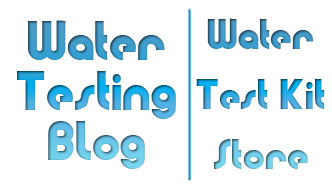Though not an often discussed water quality parameter, conductivity plays a critical role in determining water’s ‘safety’ and today’s question came to us from ‘Geoffery T’ who asked,
This is my first time in this site,so I will give my feedback after.
In water testing for conductivity, the required measurement for potable water is what level, and the level of over 550 micro siemens is potable and any effect on the taste?
Thank you
We will begin by saying that scientists define conductivity in the following manner: A given quantity of water’s ability (or inability) to conduct electricity at a specific temperature. Dissolved solids in a water sample make it possible for the sample to conduct an electrical charge and therefore the greater the quantity of dissolved (usually inorganic) solids, the great the water’s conductivity value.
With that said, 100% pure water would contain no dissolved inorganic solids and therefore conduct no electricity.
Government & Regulatory Guidelines
To our knowledge the USEPA has not, yet, included conductivity in its Primary or Secondary Drinking Water Standards so we do wonder where Geoffrey got the value of 500 micro Siemens for a threshold for potable water.
We have seen situations, however, where regulatory bodies have placed upper limits on conductivity as a means of triggering more in-depth water quality evaluations. As an example, we have read that the EPA imposed a 300 to 500 micro Siemens threshold that would stop the issuing of coal mining permits in certain areas.
Conductivity and the taste of the water?
Quite frankly we believe the taste of the water would get determined not necessarily the the quantity of dissolved inorganic solids, but rather by the nature and character of the solids. In other words, dissolved salts would impart a salty taste while dissolved metals would more than likely impart a bitter, metallic taste to the water.
Do high conductivity readings always mean unnatural or man-made contamination of a water supply?
No, not at all. Higher than expected levels of conductivity may quite often result from virtually any activity that disturbs the area around a body of water. High winds during dry weather patterns can result in dust getting blown into water and pretty much any activity that ‘loosens’ or jars loose small pieces of solids could result in additional solids finding their way into a body of water.
Scientists have not, yet, found a clear and definitive link between elevated conductivity levels and the harmful contamination of water, though waters with definite contamination issues have, in many cases, also had elevated conductivity levels.
 HM Digital QC-1 Quick Check Monitor
HM Digital QC-1 Quick Check Monitor
for TDS and Electrical Conductivity












